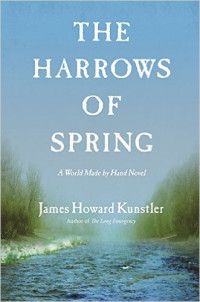

Two words should come to mind while reading just about ever chapter in this book: growth and development.

The book tallies from the Pilgrim settlements to the modern auto suburb the huge economic, social, and spiritual costs we now pay for our car-crazed addicted lifestyles.

He explains why our towns and cities came to be wounded by the abstract dogmas of Modernism, and reveals the paradox of a people who yearn for places worthy of their affection, yet bend their efforts in an economic enterprise ofdestruction that degrades and defaces what they most deeply desire.The Geography of Nowhere, The Rise and Decline of America’s Man-Made Landscape, James Howard Kunstler, 1993. Kunstler takes the reader on a historical journey to understand how Americans came to view their landscape as a commodity for exploitation rather than a social resource. He shows how common building regulations have led to a crisis in affordable housing, and why street crime is directly related to our traditional disregard for the public realm. Kunstler explains how our present zoning laws impoverish the life of our communities, and how all our efforts to make automobiles happy have resulted in making human beings miserable.

Now that the great suburban build-out is over, Kunstler argues, we are stuck with the consequences: a national living arrangement that destroys civic life while imposing enormous social costs and economic burdens. In The Geography of Nowhere, James Howard Kunstler traces America's evolution from a nation of Main Streets and coherent communities to a land where everyplace is like noplace in particular, where the city is a dead zone and the countryside a wasteland of cars and blacktop. It is the everyday environment where most Americans live and work, and it represents a gathering calamity whose effects we have hardly begun to measure. This tragic landscape of highway strips, parking lots, housing tracts, mega-malls, junked cities, and ravaged countryside is not simply an expression of our economic predicament, but in large part a cause. Eighty percent of everything ever built in America has been built since the end of World War II.


 0 kommentar(er)
0 kommentar(er)
